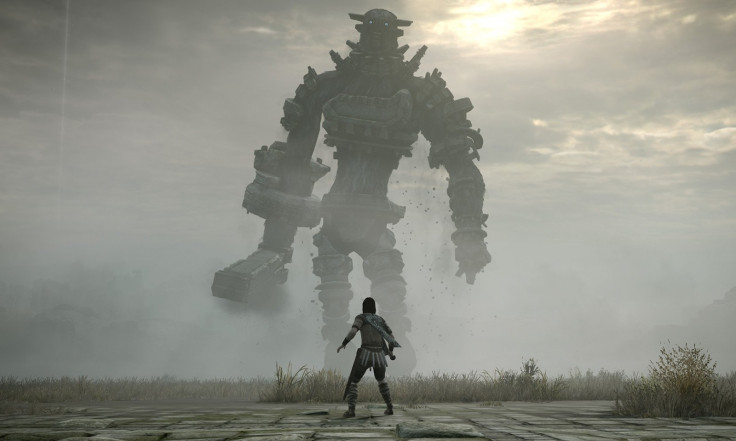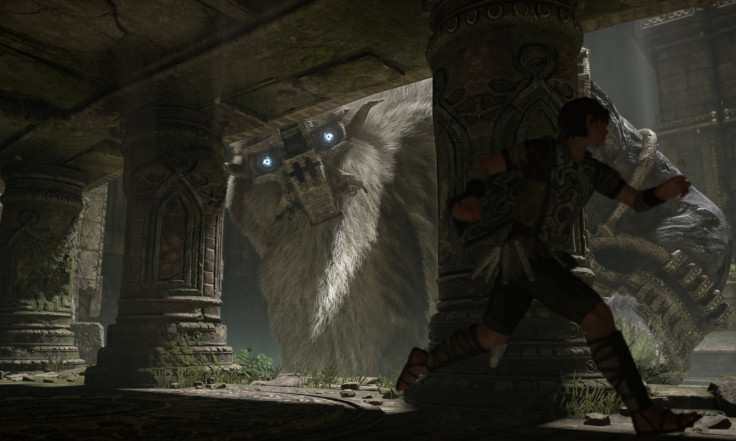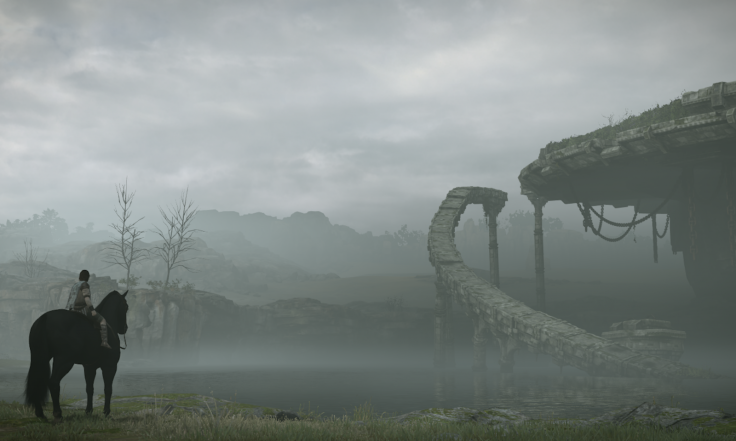Shadow of the Colossus review: A masterpiece is given new life on PS4
Fumito Ueda's video game fable remains a remarkable and unique adventure.

Shadow of the Colossus is a simple game of enormous scope. A masterpiece that, even 13 years on from its initial release, remains a singular experience and the best of Fumito Ueda and Team Ico's trilogy of video game fables.
First available in 2005, Shadow of the Colossus tells a grand and sombre story beginning with an arduous journey. A young man called Wander travels to the Forbidden Lands hopeful he can resurrect a woman called Mono, who was sacrificed for having a "cursed fate".
His task is clearly laid out. He must slay the sixteen enormous beasts that inhabit this barren place in order to save the young maiden.
The rest of the game is structured around these monumental battles.
Starting at a central temple each time, the player must venture far and wide across the land to these encounters with the aid of Wander's steed, Agro.
Each battle is built around the same fundamental steps, warped by the design and movement of the 'Colossi' themselves.
These gargantuan beings have the stature of gods, but they're gods Wander must kill. To do this players need to find a way onto each Colossus, using their fur to climb around their bodies in search of glowing weak points to be attacked with an ancient sword.
Holding on bleeds a grip meter, so players must judge when to recharge it by letting go at the risk of falling and having to start the climb again. This creates a crucial sense of tension during each encounter, and was a notable inspiration for a similar stamina bar in Nintendo's The Legend of Zelda: Breath of the Wild.
To clamber on some Colossi will require strategy. Maybe a well-placed arrow will bring one to its knees, or perhaps players will need to trick one into positioning itself in just such a way for Wander to leap on.
Each battle is ultimately very simple, but feel tremendous because the grandiose nature of the Colossi themselves everything leading up to their arrival.
Shadow of the Colossus is a rebuttal to every argument that open world games should be filled to the brim with countless characters, trinkets and side quests. The Forbidden Lands are sparse and beautiful. Every forest, valley, lake and expansive field is no more than the background for Wander, Agro and the player's ride toward another titanic scrap, but that's no less than they need to be.

It instills a sense of loneliness that slowly turns the game from one about a young man doing the seemingly impossible for the woman he loves, into one altogether more tragic and sinister.
The Colossi are ancient, unique beings, often docile, only fending off this hostile outsider when provoked. Their deaths are heart-rending and that sadness spreads. After felling one of his targets, Wander is chased by tendrils of wispy darkness that shoot through him like arrows, causing him to fall to the ground. He and the Colossus lay motionless. Really, there are no winners.
Wander awakens in the temple, another Colossus conquered, another statue destroyed, his love a little closer to being back in his arms, but with the evil at work in this strange world and in his actions slowly twisting him.
Shadow of the Colossus is a wonderful tale about corruption, selfishness, love and loss. It's the antithesis of most adventure games, which are more concerned with cultivating power fantasies than their own fantasy settings.
The game as it was is here in full, remastered faithfully by Bluepoint Games, which has done an astounding job making a 13-year-old PS2 game feel at home on PS4. In truth, Ueda's epic always felt more ambitious than the platform it was developed for, and following 2011's PS3 remasters, here is further proof.

It's significantly better looking on PS4, obviously, but remains faithful to the artistic direction of the original, retaining its muted palette and dreary skies. It's a beautiful game without feeling to need to rely on stark visuals, like Horizon Zero Dawn with its beautiful sunsets and sunrises every 20 minutes.
That beauty is easier than ever to capture and share too, with the addition of the photo mode now seemingly-mandatory for single-player PS4 exclusives.
A greater level detail also benefits the authenticity of the Colossi. Their fur moves with their movements, and the scaly skin between that fur and each Colossus's protrusions of stone appears more lifelike. In the original looked more like rock than flesh.
Upon its original release, the obtuse controls and difficult camera were widely criticised, but both have been addressed by Bluepoint. A new control scheme is much easier to contend with, but the camera still has its problems – even if they're sometimes problems worth having.
There's a constant struggle with the camera that comes with an instinctual reliance on free camera movement. It's a hindrance in certain intensive moments, but then it gets away from you in an apparent search of the most incredibly framed shots.
On horseback the game casts Wander and Agro against wide shots of the Forbidden Lands, as a light shaking of the screen sells the pair's haste. During fights, the camera seldom gives the player the complete view of the opponent they'd expect from other games, instead electing to use the frame to sell each creature's enormity in service of the drama, rather than the player.
Bluepoint Games has masterfully given new life to a masterpiece of the genre, making their Shadow of the Colossus feel in many ways like the definitive version. Porting and remaking the games of others isn't as trying as making something new, but doing so does come with significant pressure that Bluepoint has made its name dealing with. However, the studio's work wouldn't have been possible without the initial, groundbreaking efforts of Team Ico, whose towering adventure is still every bit as breathtaking and astounding as it was more than a decade ago.




















